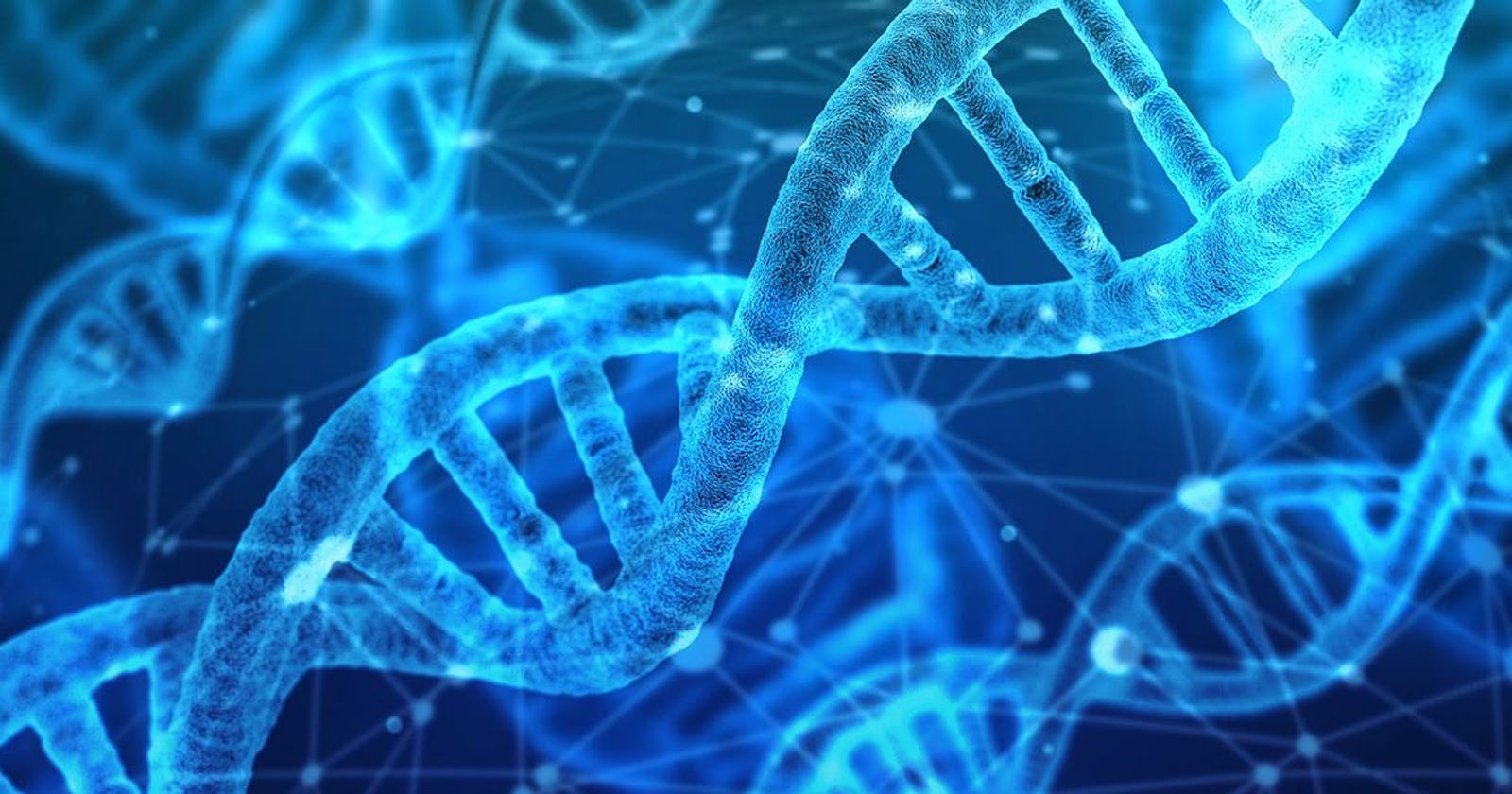The structure of DNA and RNA
Watson and crick discovered the structure of DNA. and were awarded the Nobel prize in 1962 for their discovery. DNA is a long, ladder-like macromolecule that twists to form a double helix, each linear strand of the helix is made of subunits called "Nucleotides".
there are four different nucleotides, each containing a nitrogenous base, A is adenine, G is guanine, T is thymine and C is cytosine. the double helix of DNA is complementary, A=T and C=G.
Another nucleic acid, RNA is chemically similar to DNA but contains a different sugar (Ribose rather than deoxyribose), Uracile replaces Thymine and RNA are single-stranded molecule.
Gene Expression: From DNA to phenotype
How are proteins are produced?
the genetic information translated/encoded in the order of nucleotides in DNA is expressed in a series of steps that result in the formation of a functional gene product which is Protein. this process in which DNA is translated to protein begins in the nucleus with transcription, in which one strand of DNA is used to make/construct a complementary RNA sequence.
Once RNA is produced it moves to the cytoplasm where RNA is called Messenger RNA (mRNA) for short-binds to a ribosome.
The synthesis process of protein under the direction of mRNA is called Translation.
The information encoded in mRNA is called genetic code each triple nucleotide is called a codon, and is complementary to the information stored in DNA and specifies the insertion of specific amino acids into proteins, proteins are polymers made up of amino acid monomers.
there are 20 different amino acids commonly found in proteins
Protein assembly is accomplished with the aid of adaptor molecules called transfer RNA(tRNA). tRNA recognizes the information encoded in the mRNA codons within the ribosome and carries amino acids for building protein while translation.
Protein and biological function
from the previous lines, we now know that proteins are the end products of gene expression.
the diversity of proteins and the biological functions they perform the diversity of life arises from the fact that proteins are made from combinations of 20 different amino acids, consider that a protein chain containing 100 amino acids can have in each position any one of 20 amino acids.
Proteins and Enzymes
proteins are molecules with the potential for enormous structural diversity and serve as the mainstay of biological systems.
Enzymes form the largest category of proteins, and they serve as biological catalysts, lowering the energy of activation in reactions and allowing cellular metabolism to proceed at body temperature.
protein’s shape and chemical behavior are determined by its linear sequence of amino acids, which in turn is dictated by the stored information in the DNA of a gene that is transferred to RNA, which then directs the protein’s synthesis.
linking genotype to phenotype: sickle-cell anemia
once a protein is made, it is biochemical or structural properties do it is a role to produce the phenotype.
when a mutation changes the gene that will lead to changes in its phenotype.
Sickle-cell anemia, a human genetic disorder
is caused by a mutant form of hemoglobin, a protein that carries oxygen from the lungs to cells in the body.
hemoglobin is a composite molecule made up of 2 different proteins Alpha-globin and Beta-globin each encoded by different genes.
In sickle-cell anemia, a mutation in the gene encoding Beta-globin causes an amino acid substitution in 1 of the 146 amino acids in the protein.
we now know the outline of gene expression, DNA, RNA, and proteins but it is more complex than that which will be discussed in the following blogs
